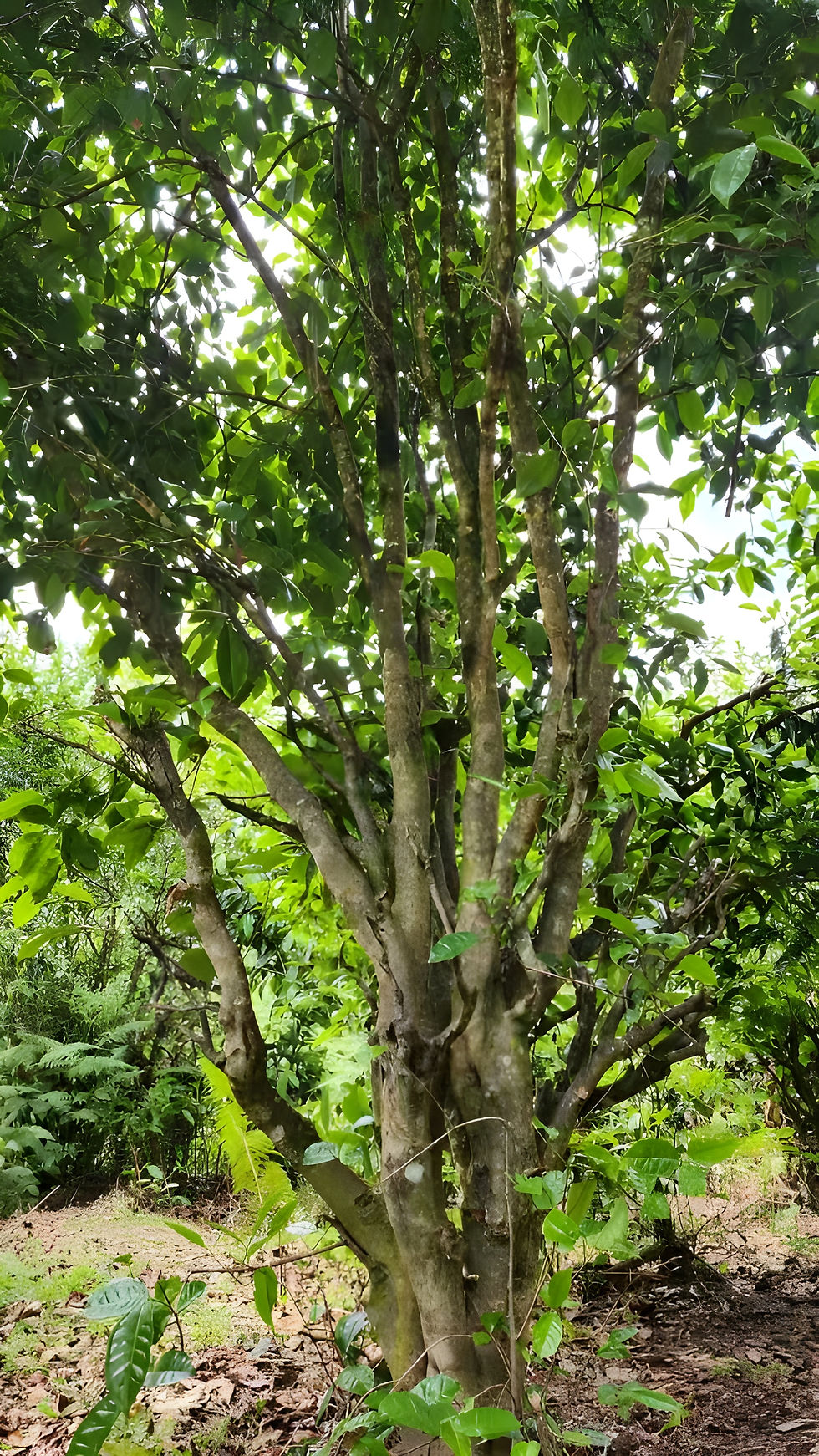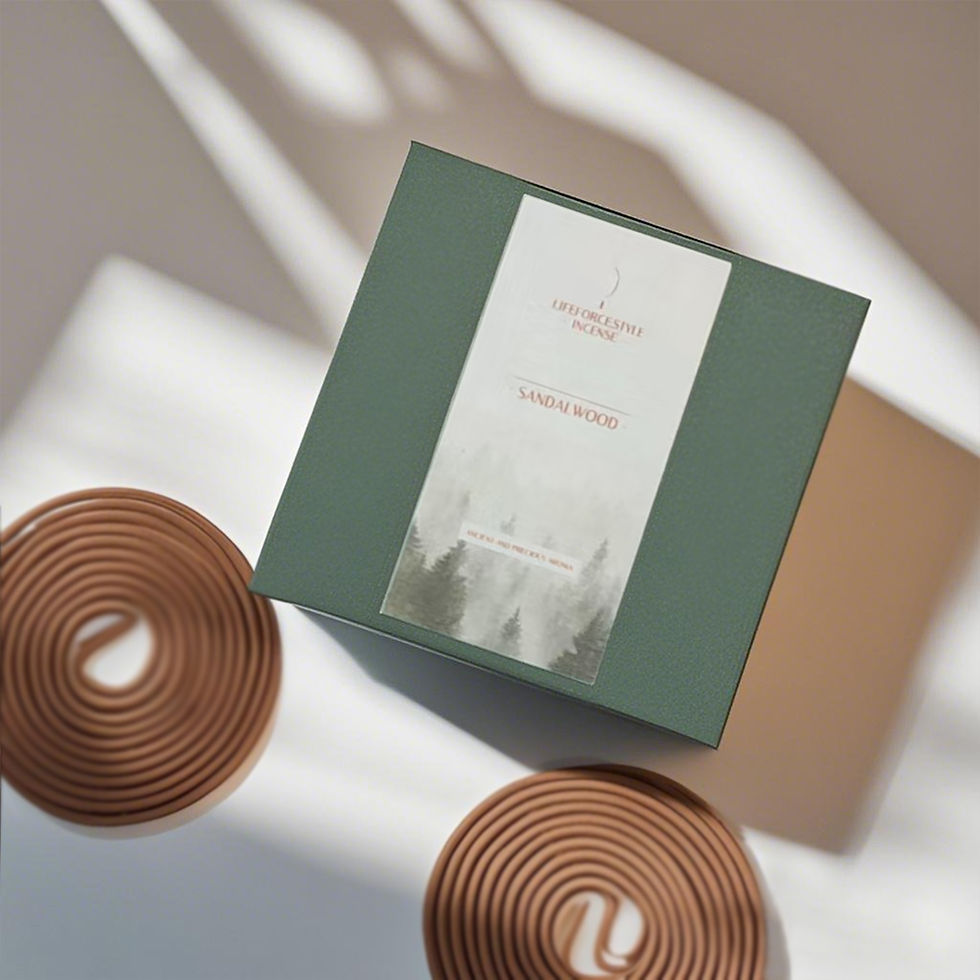The LifeForceStyle Puerh ancient tree tea - We don't cultivate tea trees.
- Felix Lee
- Feb 12
- 6 min read
Updated: Mar 17
In Fengqing County, Yunan province, China, one of the most renowned tea-producing regions in the world, renowned worldwide for producing top-quality tea: large-leaf tea tree tea (Pu'er tea). lies the majestic Fengqing Snow Mountain, the tallest peak in the area, standing at an altitude of 3,098.7 meters (10,164 feet). Surrounding the mountain is an expansive 231.6-square-kilometer (58,317 acres) area of pristine, ancient forest. Nestled within the high-altitude zone of 2,500 meters (8,202 feet) is the Yonghe Organic Ancient Tea Garden, spanning 2 square kilometers (494 acres). This nationally protected garden is home to large-leaf ancient tea trees, ranging from 200 to 1,500 years old, thriving in harmony with their natural environment.

These ancient tea trees naturally produce the finest teas in the world.
The large-leaf ancient tea trees of Yunnan, are considered the ancestors of all tea trees worldwide, with some trees exceeding 1,000 years in age. The scientific name of the large-leaf tea tree is Camellia sinensis, and in China, it is also known as Pu'er tea. China is the earliest country to discover and utilize tea, and Yunnan stands as the core origin of tea in the world.



The history of tea cultivation in Yunnan dates back over a thousand years, while the production of The large-leaf tea (as known as Pu'er tea) can be traced as far back as the Eastern Han Dynasty. Its trade began during the Tang Dynasty, gained fame in the Ming Dynasty, and reached its peak during the Qing Dynasty. As early as the Tang Dynasty (618–907 CE), tea had become a popular beverage, and tea leaves were moistened and compressed into tea bricks. From the Tang to the Song Dynasty, tea trees spread from their native Yunnan to other regions, accompanying dynastic changes and human migration. They crossed vast mountains and rivers, expanding along land and sea routes to southeastern coastal areas such as Zhejiang, Fujian, and Guangdong.

In 1169 CE, during China's Southern Song Dynasty, the Japanese monk Eisai traveled to China and returned with a large number of tea seeds from Zhejiang, planting them in Kanzaki District, Saga Prefecture. This marked the beginning of large-scale tea cultivation in Japan. Starting in the 19th century, tea seeds from China were introduced to countries such as Indonesia, India, Sri Lanka, Kenya, and Malawi under the active promotion of colonial powers like the Netherlands and the United Kingdom. Coupled with the rise of the First Industrial Revolution, tea production transitioned from traditional manual methods to mechanized processes, significantly improving both yield and quality. As a result, the global tea industry experienced rapid growth.

Ancient large-leaf tea trees differ fundamentally from newly planted large-leaf tea trees and small-leaf shrub tea trees grown in artificial tea plantations. In plantations, these younger trees are often treated with fertilizers and pesticides, grown in high-density arrangements, and have shallow root systems with limited nutrient absorption capabilities.
In contrast, ancient large-leaf tea trees are robust and tall, with exceptional adaptability to their environment. They thrive naturally in high-altitude, pristine forests, where they have evolved over centuries or even millennia, forming a harmonious symbiotic relationship with the surrounding ecosystem. These trees have deep root systems that penetrate the uncontaminated forest soil, allowing them to absorb abundant minerals and natural nutrients, which contribute to the tea leaves' complex and rich composition.
In 1897, Germany published Köhler's Medicinal Plants, which included detailed illustrations of the large-leaf tea tree, documenting its biological characteristics.
The large leaves of these ancient tea trees are rich in nutrients. Studies have shown that tea made from ancient large-leaf trees contains significantly higher levels of polyphenols, catechins, sugars, and trace elements such as iron, copper, and manganese, compared to both newly planted large-leaf tea trees and small-leaf shrub tea trees.
These unique components provide significant health benefits, addressing common issues such as obesity, sleep disorders, cancer, Alzheimer's disease and aging. Tea polyphenols activate fat-breaking enzymes, enhancing fat metabolism and reducing fat accumulation. Catechins inhibit fat absorption in the intestines, while caffeine boosts basal metabolic rates and promotes calorie burning, aiding in weight management. Additionally, the active compounds in ancient tea trees help suppress appetite, reducing caloric intake.
The amino acids in Ancient large-leaf tea tree tea, such as L-theanine, promote alpha-wave production in the brain, fostering relaxation and stress relief, which can improve sleep quality. L-theanine also balances neurotransmitters like GABA, aiding in both relaxation and focus. Low-caffeine teas like white tea and aged white tea offer warmth and comfort without disrupting sleep. For example, white tea contains around 15mg of caffeine per 50ml (1.69 fl oz), while yellow tea has about 25mg, oolong tea has about 30mg, green tea has about 40mg, black tea about 60mg and dark tea about 70mg.
Tea polyphenols and catechins can reduce the accumulation of free radicals in the body, slowing down the process of cellular aging. Polyphenolic compounds promote collagen production, reduce wrinkles and dullness in the skin, and help maintain skin elasticity and radiance. The rich minerals and antioxidants found in ancient tree teas can enhance immune system function, helping the body better withstand external stressors. Catechins are powerful antioxidants, and regular consumption of ancient tree tea can help regulate blood sugar, protect cardiovascular and liver functions, and delay aging issues caused by organ decline. This, in turn, makes them effective in cancer prevention and reducing the risk of dementia.
Among the natural components of tea, catechins are generally considered to have the highest antioxidant activity, especially epigallocatechin gallate (EGCG), which is one of the most potent antioxidant forms. Catechins are small-molecule compounds with multiple phenolic hydroxyl groups (-OH) in their structure, giving them strong antioxidant capabilities. They can directly scavenge free radicals, inhibit lipid peroxidation, protect cells from oxidative damage, enhance immunity, and prevent cardiovascular diseases and cancer.
Theaflavins, on the other hand, react with free radicals by donating electrons and form stable complexes with peroxides. Their antioxidant mechanism is gentler than that of catechins but lasts longer, providing sustained antioxidant protection. Theaflavins also aid in regulating blood lipids and have anti-inflammatory properties, making them suitable for long-term health maintenance. Thearubigins primarily chelate metal ions and stabilize cell membranes, indirectly reducing the production of free radicals. They are particularly effective in protecting gut microbiota, reducing inflammation, and chelating metal ions, showing significant benefits in combating chronic inflammation and improving gut health.
Ancient large-leaf tea trees are harvested in a unique way. Unlike tea cultivated in densely planted artificial gardens, the picking of ancient tree tea requires venturing into remote mountain forests. This ensures that every leaf carries the pure and natural flavor of its origin. These ancient tree teas are typically low in yield but exceptionally high in quality, as the unpolluted natural environment allows the leaves to retain their pristine characteristics.


In terms of flavor and aroma, ancient large-leaf tree tea exhibits a rich and full-bodied fragrance, coupled with a deeper, more mellow taste. The tea liquor is full and layered, with a long-lasting sweet aftertaste, delivering a complex yet enduringly smooth flavor. It even possesses a distinctive "wild mountain essence," a characteristic born from the tea’s long-term coexistence with the forest ecosystem.
Ancient large-leaf tree tea, grown in harmony with nature, transcends the realm of mere beverage—serving instead as a conduit of life force and ancient wisdom. Every sip of tea from these ancient large-leaf trees embodies an abundance of natural life force, forging a profound connection to the essence of life itself. These ancient trees, through centuries of existence, impart the wisdom of nature to humanity, nourishing both body and soul with their accumulated life energy.
With deep reverence, we share the legacy of these ancient, resilient, and wise beings, reflecting their centuries-long insights into the natural world. We firmly believe that these world-class ancient large-leaf tree teas can bring you health, longevity, personal growth, confidence and strong Life Force.








































Comments